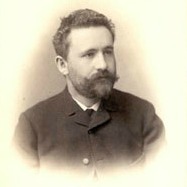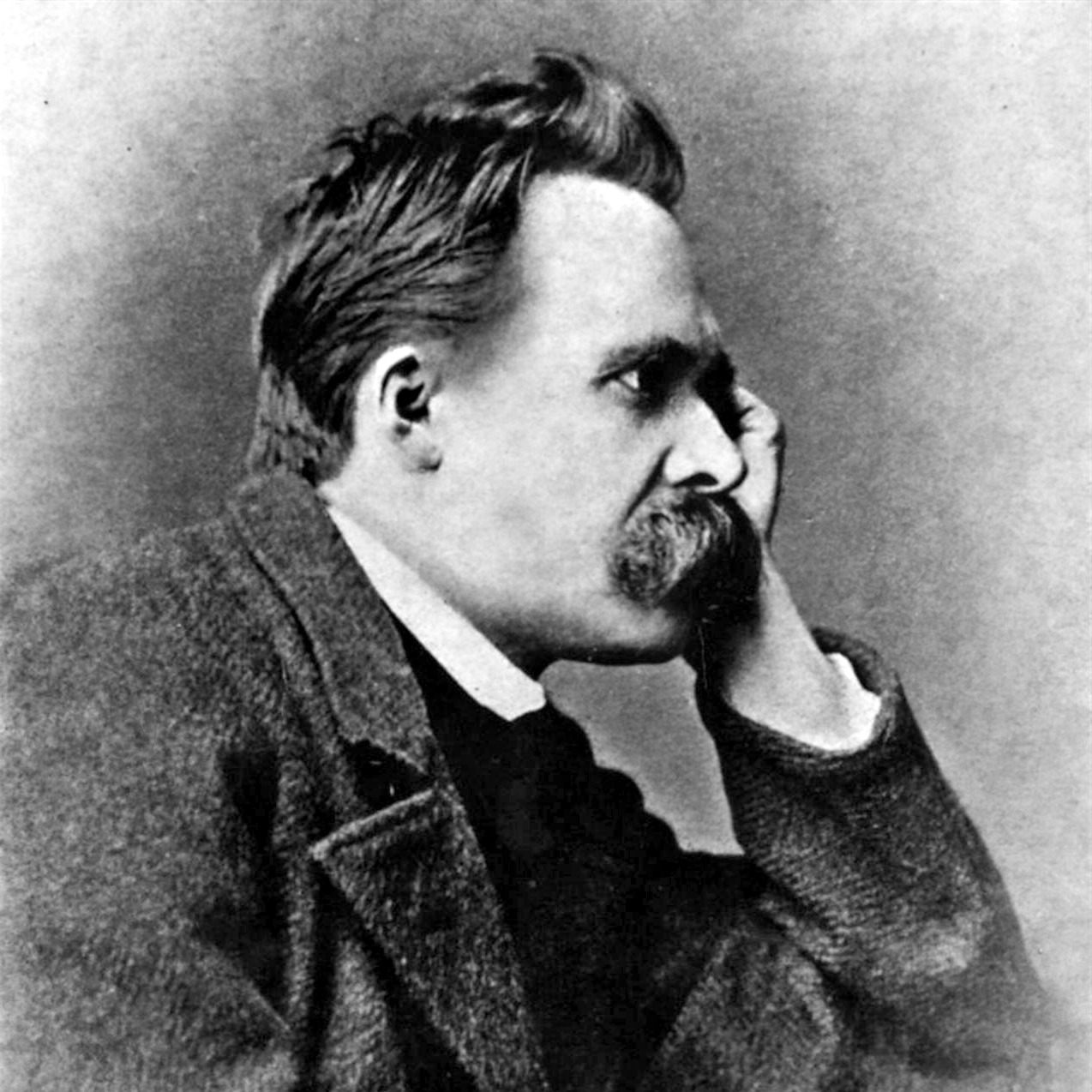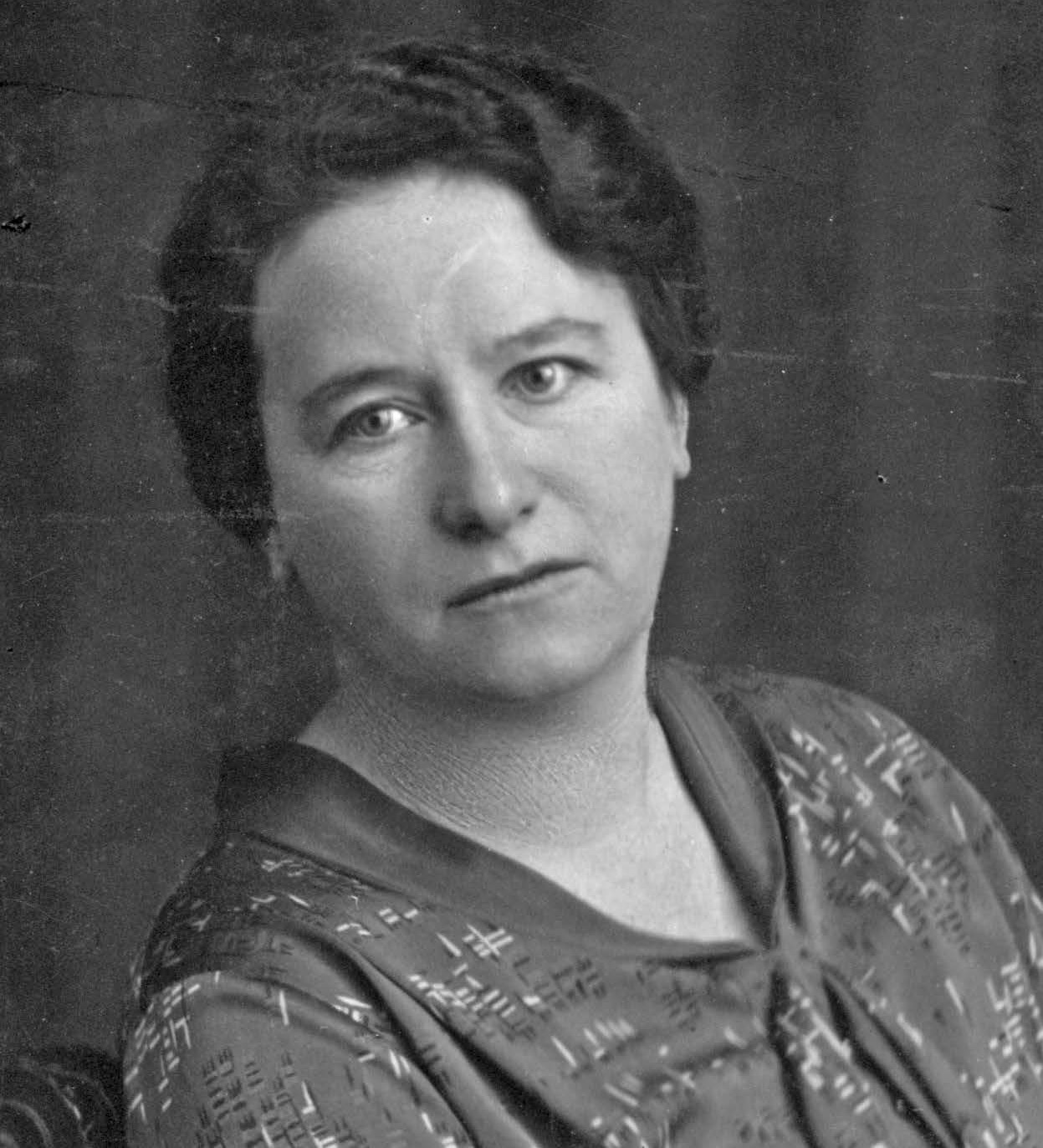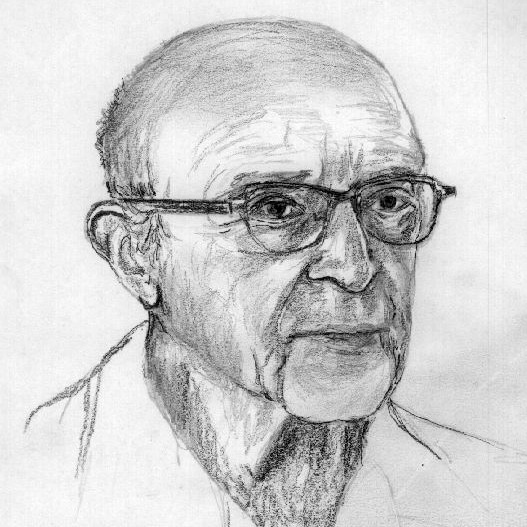- Surname:
- Kolb
- First name:
- Gustav
- Era:
- 20th century
- Field of expertise:
- Psychiatry
Social psychiatry - Place of birth:
- Ansbach
- * 04.12.1870
- † 20.03.1938

Kolb, Gustav
German psychiatrist, pioneer of outpatient care in Germany.
Gustav Kolb (1870–1938) was born on 4 December 1870 in Ansbach, Bavaria, as the son of Heinrich Georg Adolph Kolb (1834–1893) and Sophie Emilie Karoline Schaeffer (1845–1927). After school education, he studied medicine in Erlangen and obtained his doctorate in Breslau in 1895. He started working as a junior physician under Carl Kraussold (1840–1915) at the Bayreuth asylum in 1896 and was appointed the institution’s “second physician” in 1902. In 1905, he became the director of the newly established district asylum in Kutzenberg, Upper Franconia. There he advocated a “system of open doors,” agricultural work on asylum farms (so-called “colonies”) and family-based caregiving. It was also in Kutzenberg that Kolb initiated the first experimental discharges, on the basis of which he later developed the system of psychiatric outpatient care in Erlangen after having succeeded August Würschmidt as director of the Erlangen asylum in 1911. His work was interrupted by the First World War during which he was on military duty from 1914 to 1918. When he was on leave for a longer period of time due to illness, Wilhelm Caselmann took over as his substitute in 1928. Kolb retired in 1934, his successor was Wilhelm Einsle (1881–1961). Gustav Kolb took up residence in Starnberg where he died on 20 March 1938. He and his wife, Marie (née Kraussold), had five children: Adolf (*1902), Gertrud (*1903), Lulu (*1905), Karl Adolf (*1907) and Erna Valerie (*1909).
Kolb pioneered and promoted a new form of open outpatient clinic to care for the mentally ill, a system to which he referred as “Außenfürsorge”, or “external care”. He also co-founded the German Association for Mental Hygiene and served as an assessor on the association’s board under executive secretary Hans Roemer (1878–1947), alongside Hermann Simon (1867–1947), Wilhelm Weygandt (1870–1939), and Robert Sommer (1864–1937).
Promoter of social reforms and professional policies
In 1919, Kolb published a concept for the renewal of institutional psychiatry: the “open care” system. Contrary to the prevailing clinical practice at the time, he demanded that extramural psychiatric treatment should also be made available. The resulting tasks were to be assigned to psychiatrists as long as public health officers lacked the required professional qualifications (cf. Ley 2006: 195 ff.). This concept developed further until around 1930 into a form of outpatient care that had not previously existed in this way. With his initiative, Kolb also sought to serve his own profession: the model of “open care” was meant to expand the responsibilities and competences of psychiatric care and to establish a new professional profile with the position of the so-called “care doctor”.
As early as 1902, Kolb, then still a junior physician, had called for the “opening of asylums” and the provision of follow-up care for discharged patients. A decade later, he presented a catalogue of demands for a “more liberal organization of the insane asylum system” (Kolb 1911: 273 ff.; translated from German) in the journal Zeitschrift für die gesamte Neurologie und Psychiatrie. Apart from ideas for social reforms and professional policies, this catalogue comprised a detailed concept of “open care”, including aims such as integrating patients into caregiving families, keeping their relatives informed as well as the statistical recording and monitoring of cases. When published in 1908, Kolb’s proposals for improving the organization of the Bavarian asylum system initially met with little approval.
In addition to the concept of “open care”, Kolb relied on the tradition of family-based caregiving. Since psychiatric care at the time had no provisions for outpatient aftercare, Kolb made sure that external care centers were established from 1908 onwards. These centers offered both consultation hours and home visits (cf. Brückner 2010: 123). By 1911, a total of 3,519 people in the German Empire were provided for by caregiver families (Kolb 1911: 275).
‘Open care’ in Erlangen
In 1912, Kolb implemented the “open care” system at Erlangen asylum to demonstrate his concept in practice. These first beginnings were, however, interrupted by the World War, but he resumed his activities in the spring of 1919 and systematically expanded “open care” in Erlangen together with his student and colleague Valentin Faltlhauser (1876–1961), who later became one of the medical experts in the Nazi’s Action T4 euthanasia program. Kolb thus created an alternative model to the clinical psychiatry of his time.
Kolb presented his practical experiences at the annual conferences of the Association of Bavarian Psychiatrists and the German Association for Psychiatry in 1919 and 1920. His reform proposals initially met with a rather cautious response (cf. Söhner 2016: 101 f.; Ley 2006: 198). Together with Hans Roemer und Valentin Faltlhauser, he published the standard work Die offene Fürsorge in der Psychiatrie und ihren Grenzgebieten [Open Care in Psychiatry and its Border Areas] in 1927. The entire subject was central to the objectives of the Association for Mental Hygiene (cf. Plezko 2011: 24). At the annual meeting of the German Association for Psychiatry in Gdansk in May 1929, Kolb gave a lecture on the “future design of asylums with special regard to open care” (cf. Söhner 2016: 102). He deemed it imperative to rethink the design of the asylum system in the face of ever rising occupancy rates in psychiatric facilities (cf. Schmuhl 2015: 39). Because of the austerity policy in the wake of the world economic crisis, the treatment concept proposed by Kolb was increasingly welcomed, and most of the larger psychiatric institutions started implementing the model of “open care”. In 1930, Faltlhauser reported after a nationwide survey that of 111 public asylums, eighty had adopted the concept and established or at least initiated “open care” (cf. Faltlhauser 1930: 174).
As a board member of the German Association for Mental Hygiene, Kolb was among the German expert representatives at the First International Congress for Mental Hygiene in Washington, D.C., in 1930 (together with W. Weygandt, H. Roemer and H. Simon). There he was one of five German speakers and presented the model of “open care” provision that he had developed (cf. Leibbrand 1946: 94 f.).
After 1933
In his correspondence with Roemer from June 1933, Kolb writes about a personal encounter with Ernst Rüdin, during which they had discussed the idea of an “autumn class on eugenics” in Munich (cf. Schmuhl 2015: 210). Even though Kolb cannot be accused of involvement in the later crimes of Nazi “euthanasia” – in 1933, he undeniably had supported the idea of using data from outpatient care for “racial hygiene” purposes (cf. Brückner 2015: 25 f.). In retrospect, Kolb (1927: 394) described the development of psychiatric outpatient care as the “essential goal” of his professional life. In the years after the Second World War, however, the extramural model of “external care” lost its previous significance (cf. Siemen 1991: 192). The historical evaluation of Kolb’s achievements depends, among other things, on how we assess the societal function of psychiatric outpatient care in the context of different political power structures. This analysis is still ongoing.
Literature
Böcker, F. M. (1985): Psychiatrische Familienpflege und offene Fürsorge: Sozialpsychiatrische Konzepte bei Gustav Kolb und heute. In: E. Lungershausen, R. Baer (eds.): Psychiatrie in Erlangen. Festschrift zur Eröffnung des Neubaues der Psychiatrischen Universitätsklinik Erlangen. Erlangen: Perimed, pp. 62–82.
Böcker, F. M. (2004): Von der Familienpflege zur offenen Fürsorge: Der Beitrag von Gustav Kolb zur deutschen Sozialpsychiatrie im ersten Drittel des 20. Jahrhunderts. In: Sozialpsychiatrische Informationen, 4/2004, pp. 11–18.
Brandl, K. (1920/21): Jahresversammlung des Vereins bayerischer Psychiater am 3. und 4. August [1919] zu München. In: Allgemeine Zeitschrift für Psychiatrie und psychisch-gerichtliche Medizin 76, pp. 248–266.
Braun, B., J. Kornhuber (2014): Das Erlanger System der offenen Fürsorge: Eine Würdigung Gustav Kolbs (1870-1938). In: Fortschritte der Neurologie Psychiatrie 82 (7), pp. 401–413.
Brückner, B. (2010): Geschichte der Psychiatrie. Bonn: Psychiatrie-Verlag.
Brückner, B. (2015): Geschichte der psychiatrischen Sozialarbeit in Deutschland im 20. Jahrhundert – ein Überblick. In: M. Dörr (ed.): Sozialpsychiatrie im Fokus sozialer Arbeit. Hohengehren: Schneider, pp. 21–30.
Cranach, M. v., H. L. Siemen (2012): Psychiatrie im Nationalsozialismus. Die Bayerischen Heil- und Pflegeanstalten zwischen 1933 und 1945. Munich: Oldenbourg.
Faltlhauser, V. (1930): Der gegenwärtige Stand der offenen Fürsorge an den deutschen öffentlichen Heil- und Pflegeanstalten. In: Zeitschrift für psychische Hygiene 3, pp. 163–175.
Haselbeck, H. (1985): Zur Sozialgeschichte der “Offenen Irren-Fürsorge” – Vom Stadtasyl zum Sozialpsychiatrischen Dienst. In: Psychiatrische Praxis 12 (5), S. 171–179.
Jakob, A., V. Kafka (1920): Jahresversammlung des Deutschen Vereins für Psychiatrie in Hamburg am 27. und 28. Mai 1920. In: Allgemeine Zeitschrift für Psychiatrie und psychisch-gerichtliche Medizin 76, pp. 593–668.
Kolb, G. (1902): Sammel-Atlas für den Bau von Irrenanstalten. Ein Handbuch für Behörden, Psychiater und Baubeamte. Halle: Marhold.
Kolb, G. (1908): Vorschläge für die Ausgestaltung der Irrenfürsorge und die Organisation der Irrenanstalten. Halle: Marhold.
Kolb, G. (1911): Die Familienpflege unter besonderer Berücksichtigung der bayrischen Verhältnisse. In: Zeitschrift für die gesamte Neurologie und Psychiatrie 6 (1), pp. 273–304.
Kolb, G. (1919): Reform der Irrenfürsorge. In: Zeitschrift für die gesamte Neurologie und Psychiatrie 47, pp. 137–172.
Kolb, G. (1927): Schlußwort. In: Roemer, H., G. Kolb, V. Faltlhauser: Die offene Fürsorge in der Psychiatrie und ihren Grenzgebieten. Ein Ratgeber für Ärzte, Sozialhygieniker, Nationalökonomen, Verwaltungsbeamte sowie Organe der öffentlichen und privaten Fürsorge. Berlin: Springer, pp. 390–397.
Kolb, G. (1928): Psychiatrischer Entwurf zu Richtlinien für die Außenfürsorge in Bayern. In: Allgemeine Zeitschrift für Psychiatrie und psychisch-gerichtliche Medizin 88, pp. 433–448.
Kolb, G. (1931): Die offene psychiatrische Fürsorge. In: O. Bumke, G. Kolb, H. Roemer, E. Kahn (eds.): Handwörterbuch der psychischen Hygiene und der psychiatrischen Fürsorge. Leipzig: de Gruyter.
Kreuter, A. (1995): Gustav Kolb. In: A. Kreuter: Deutschsprachige Neurologen und Psychiater: Ein biographisch-bibliographisches Lexikon von den Vorläufern bis zur Mitte des 20. Jahrhunderts. Munich: Saur, p. 500.
Krumm, S., Becker, T. (2004): Historische Aspekte und Konzepte der Sozialpsychiatrie. In: M. Schmid, M. Tetzer, K. Rensch, S. Schlüter-Müller (eds.): Handbuch Psychiatriebezogene Sozialpädagogik. Göttingen: Vandenhoeck & Ruprecht, pp. 40–58.
Leibbrand, W. (1946, ed.): Um die Menschenrechte der Geisteskranken. Gedenk- und Mahnworte der Ärzte der Erlanger Heil- und Pflegeanstalt aus Anlaß deren 100jährigen Bestehens. Nuremberg: Die Egge.
Ley, A. (2006): Psychiatriekritik durch Psychiater. Sozialreformerische und professionspolitische Ziele des Erlanger Anstaltsdirektors Gustav Kolb. In: A. Fangerau, K. Nolte (eds.): Moderne Anstaltspsychiatrie im 19. und 20. Jahrhundert: Legitimation und Kritik. Stuttgart: Steiner, pp. 195–220.
Plezko, A. (2011): Handlungsspielräume und Zwänge in der Medizin im Nationalsozialismus. Das Leben und Werk des Psychiaters Dr. Hans Roemer (1878-1947). Inauguraldissertation zur Erlangung des Grades eines Doktors der Zahnmedizin des Fachbereichs Medizin der Justus-Liebig-Universität Gießen.
Roemer, H., G. Kolb, V. Faltlhauser (1927): Die offene Fürsorge in der Psychiatrie und ihren Grenzgebieten. Ein Ratgeber für Ärzte, Sozialhygieniker, Nationalökonomen, Verwaltungsbeamte sowie Organe der öffentlichen und privaten Fürsorge. Berlin: Springer.
Schmuhl, H.-W. (2015): Die Gesellschaft Deutscher Neurologen und Psychiater im Nationalsozialismus. Berlin: Springer.
Schott, H., R. Tölle (2006): Geschichte der Psychiatrie: Krankheitslehren, Irrwege, Behandlungsformen. Munich: Beck.
Siemen, H. L. (1991): Reform und Radikalisierung. Veränderungen der Psychiatrie in der Weltwirtschaftskrise. In: N. Frei: Medizin und Gesundheitspolitik in der NS-Zeit. Munich: Oldenbourg, pp. 191–200.
Söhner, F. (2016): Familiäre psychiatrische Versorgung an der Schwelle vom langen 19. Jahrhundert zur Moderne. In: H.-P. Schmiedebach (ed.): Entgrenzung des Wahnsinns – Psychopathie und Psychopathologisierung in urbanen und provinziellen öffentlichen Räumen um 1900. Munich: Oldenbourg, pp. 97-129.
Walz, K. (1946): Das System der Irrenfürsorge Gustav Kolbs. In: W. Leibbrand (ed.): Um die Menschenrechte der Geisteskranken. Gedenk- und Mahnworte der Ärzte der Erlanger Heil- und Pflegeanstalt aus Anlaß deren 100jährigen Bestehens. Nuremberg: Die Egge, pp. 91–102.
Felicitas Söhner
Photo (copyright): LWL-Archivamt für Westfalen, Archiv Landschaftsverband Westfalen-Lippe, Best. 926/127alz.
Referencing format
Felicitas Söhner (2016):
Kolb, Gustav.
In: Biographisches Archiv der Psychiatrie.
URL:
biapsy.de/index.php/en/2-uncategorised/291-kolb-gustav
(retrieved on:07.09.2025)






